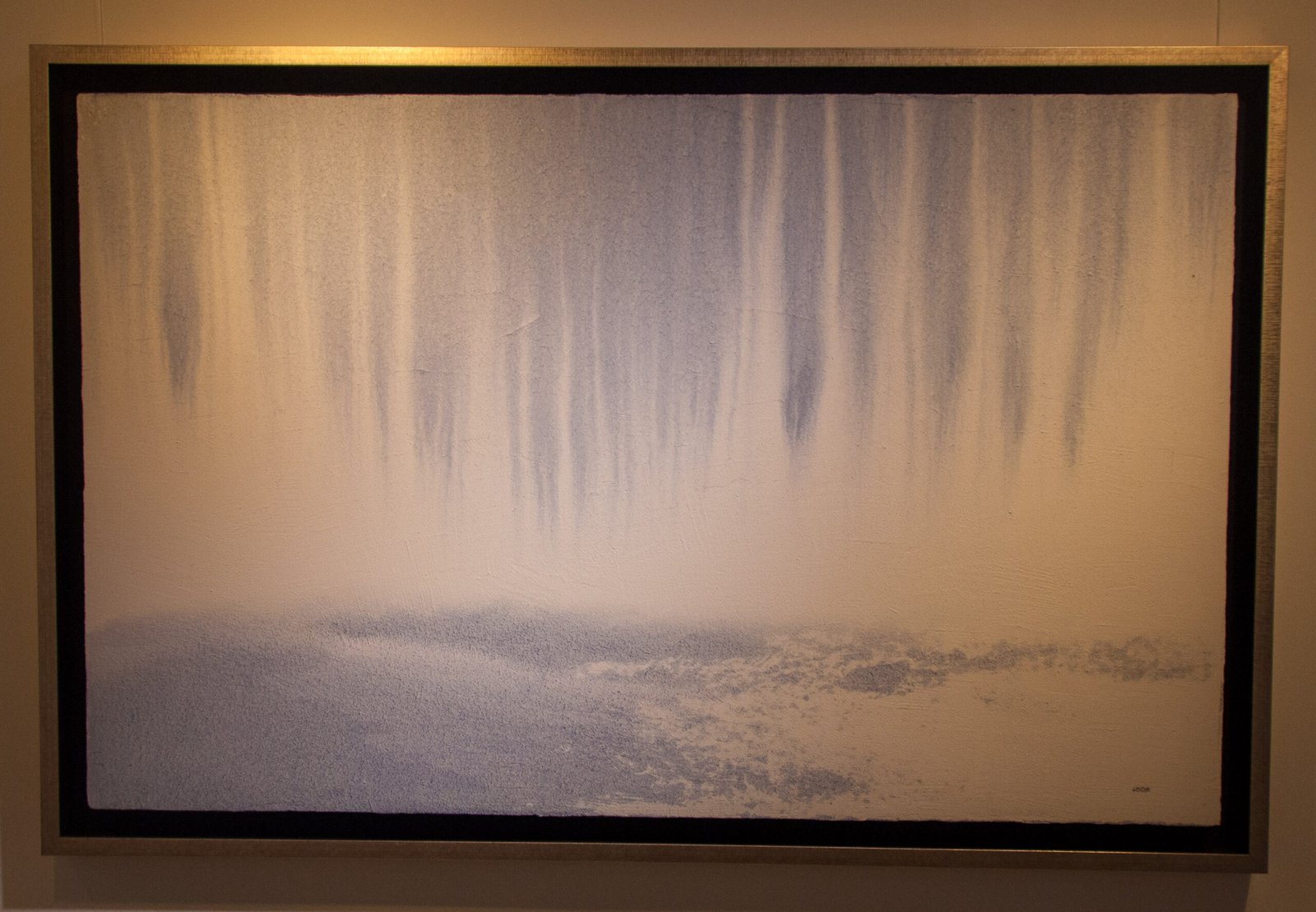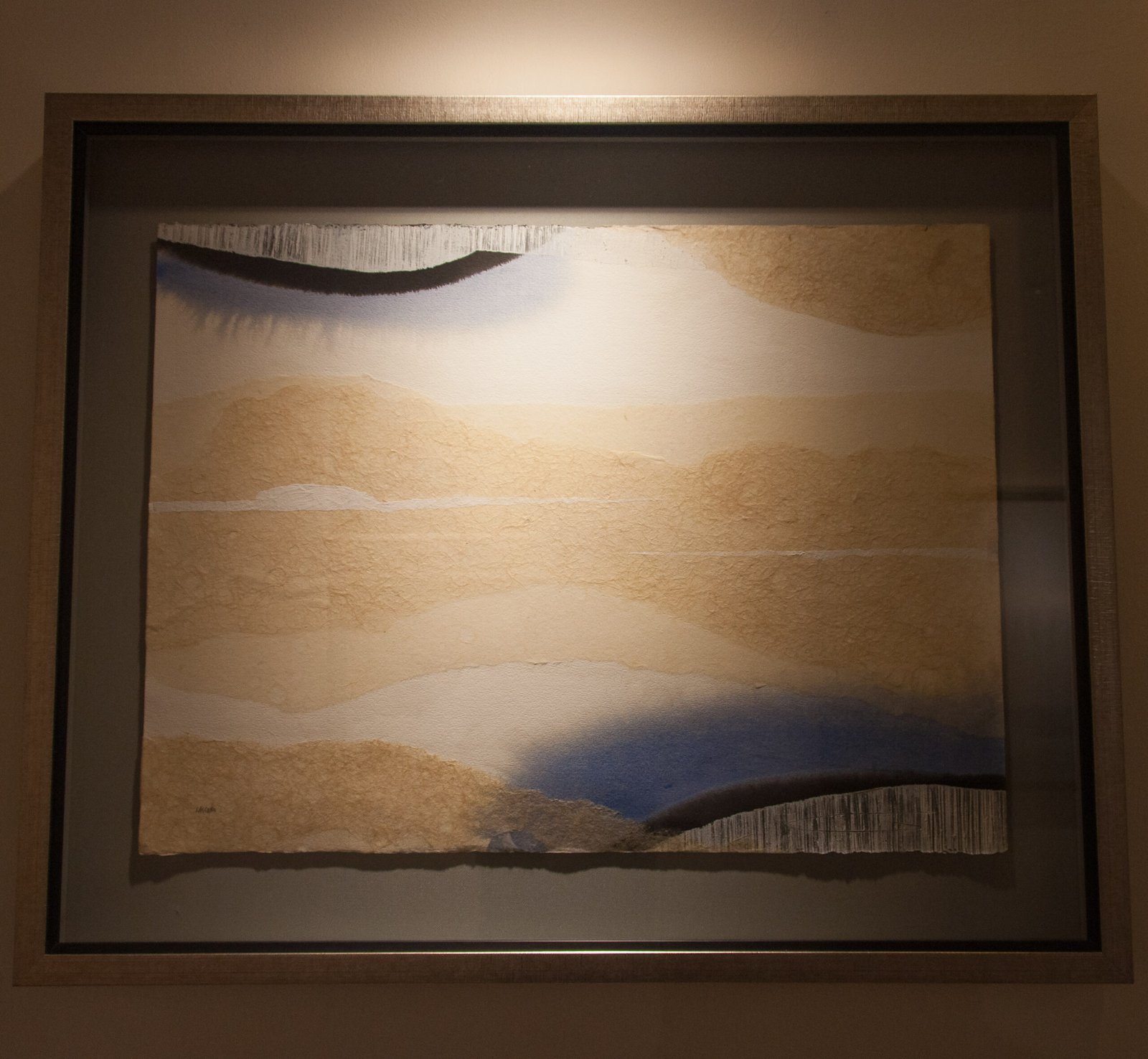Spatium Divinae
Start
14 June 2018End
01 July 2018Artist
Rico LascanoGallery
3/F Greenbelt 5, Legazpi St., Ayala Center, Makati City, 1228 Philippines
RICO LASCANO’s “SPATIUM DIVINAE”:
ON THE EDGE OF EVANESCENCE
By Cid Reyes
Contributor
To paraphrase a beloved Biblical line: “Be still, and know that I am Art.” And yet lamentably how many artists can never keep still, ever restless, disturbing the silence of space, soliciting noise and activity, filling up every square inch of the canvas with ornamentation and filigree of every sort, in a true manifestation of horror vacui. This fear of empty space has gripped us by the throat, as if we equate emptiness with waste of expensive canvas, or a paucity of ideas.
To be sure, many artists hog the pictorial space so tightly as to hardly leave any breathing space, driving the painting to a state of exhaustion by the sheer ceaseless manipulation and meandering of the plastic elements; so manic is their desire to display a technical skill. Alas, space cannot be owned by an artist like acreage, tilled and furrowed to yield a relentless harvest.
In his current exhibition at Altro Mondo Gallery, Rico Lascano presents his view of space, in a show titled “Spatium Divinae.” These recent works are his contemplative imaginings of Divine space, celestial space, in which the artist bids us enter deeply with no need for a florid invocation, lest it fades away into nothingness. To experience evanescence is to understand the mystery of visibility.
Lascano has always treated space with a kind of reverence, aware of its sanctity that demands respect, its enchantment and rapture unalloyed. Even an artist’s sense of detachment must be nourished and cultivated, for the act itself is a form of self-discipline, so essential in the refinement of the aesthetic faculty.
In the past decade of his art making, Lascano, has consistently subscribed to the exercise, not of seeing, but of feeling. Indeed, there is not much to see, if by seeing we seek a reality of the visible world, whether through the format of a landscape or still life or the favored theme of Mother and Child. In a Lascano canvas, one might as well see darkness, though ironically, his works are among the most light-filled of works by contemporary Filipino artists. Light-filled, as opposed to color-filled. In practice, Lascano dilutes his acrylics to a thin, flowing watercolor consistency. His act of flooding an entire area of canvas with these liquid-rich pigments is like a meditation on a world that has receded into mist and memory, even as our eyes accustom themselves to withdrawing from this physical world.
Wind and water become not elements of nature but states of peace and serenity. Consequently, Lascano’s works have assumed in the viewer’s mind – in his attempt to “read” his works – an association with the Zen Buddhist impulse, to which “emptiness” means “the complete negation of all personality.”
Undoubtedly, Lascano has always cleaned up, cleared up, his space, liberating it from attachments to the world as we know it. Space for him is not merely physical measurement, but often has the weight of spiritual dimension. Indeed, Lascano’s works have always courted simplicity and order, albeit of a lyrical kind. The artist is seduced by the elusiveness of meaning, which may come as a flash of enlightenment, not unlike as in a haiku, which in fact Lascano has substantially mined, in partnership with his wife Chachu, who is herself a mean weaver of words – the couple exulting in a unity of non-image and non-meaning (for truth can slip away as instantly as the moment it is glimpsed).
One is aware, however, of Lascano’s craftsmanship, which is neither preening nor exhibitionist. Though no doubt, of a very high level indeed, it is rather self-effacing, almost embarrassed to call attention to itself. But the viewer senses that despite the rather lofty realm to which he has now ascribed these recent works – not just cosmic space, but celestial space, where it is implied God Himself resides! – they have achieved their serene beauty and elegance, silence and solitude, through a sensitivity that is certainly unearthly, though the viewer can remain earthbound, rooted to the ground, but nonetheless with uplifted face, heavenwards, as he sees a renewed and intimate vision of skies and clouds, ripe with impending rain or emerging light, as though beckoning him towards a space he can invisibly enter.
Generally, Filipino male artists cringe at the thought of wearing their faith on their sleeve, but not until the likes of the late National Artist Vicente Manansala took on as his panata (vow) to paint a Crucifixion painting every Lenten season. So inspirational was the master’s affirmation of faith that we now have the annual Lenten “Kristo” exhibition, still running for over a decade, in fact, with “chapters” in various parts of the country. This is truly a laudable expression of the faith of Filipino artists, who, willfully, notoriously, will not paint a subject to which they are lukewarm. In James 2: 18, we read: “I will show thee my faith by my works.”
Painting, then, is undeniably an artist’s act of prayer, a lifting up of one’s talent and skill – acknowledging a Higher Source Whom we call by whatever name: Dios, Allah, Bathala – that is the origin of the artist’s gift. As Ben Nicholson, the British abstractionist, once said” “Painting and religious experience are the same thing.”
Thomas Merton, writing on the subject of “Art and Spirituality,” shares that “Christian contemplation is not something esoteric or dangerous. It is simply the experience of God that is given to a soul purified by humility and faith.” Rico Lascano’s works in “Spatium Divinae”, with their irradiation of openness and sense of the Void, calm the disturbed waters of our contemporary existence.
Altro Mondo is at the 3/L, Greenbelt 5, Legazpi St., Ayala Center, Makati. For inquiries, call tel nos: 501-3270 to 71.






















